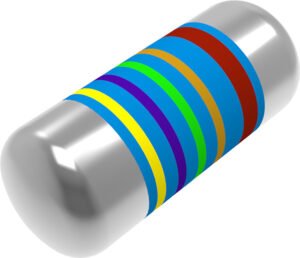eXceptional
The Diablo-X is the first DAC/amp on the market to support the revolutionary xMEMS‘ solid state monolithic speaker technology.
This unique technology features:
- Ultra-fast mechanical response (~15µsec; 150x faster than a typical dynamic driver)
- Flat 2° phase response for more accurate sound reproduction
- +/- 1° phase matching (part-to-part) for more accurate spatial sound
- Silicon speaker diaphragm (95x more stiff/rigid than plastic) for reduce speaker break-up (less muddy mids/highs)
Brian Lucey, 8-time Grammy Winning Mastery Engineer, calls it “truly disruptive’ with “phase performance unlike no other speaker technology”. Discover why in 3 minutes.
This level of performance requires a higher voltage solution to drive it, so iFi have partnered with XMEMs to produce the Diablo-X – a first to drive a first!

xMEMS eXplained
The xMEMS micro speaker technology uses the piezoelectric effect to create a paper-thin solid-state speaker. These micro-speakers offer great potential to push the boundaries of IEM and headphone performance.
As xMEMS themselves say, “The inverse piezoelectric effect is created by applying electrical voltage to make the piezoMEMS contract or expand, converting electrical energy to mechanical energy. This energy excites an integrated silicon membrane to move air and generate acoustic sound waves…. xMEMS’ piezoMEMs actuators offer an increased range of movement enabling rich, loud audio”.
Diagram taken from xmems.com
Still devilishly delightful…
The Diablo-X can still also be used with your favourite IEMs/headphones and, just like the original, uses two Burr-Brown DAC chips and the 16-core XMOS chip to process the data received via the USB and S/PDIF digital inputs. This means the Diablo-X can handle up to PCM 768, DSD 512, 2xDXD. Both PCM and DSD remain ‘bit-perfect’. It provides full MQA decoding.
Balanced, differential analogue circuit design reduces noise and cross-talk within the signal path by fully separating the left and right channels. The Diablo-X includes our PureWave tech – refinements to our balanced, symmetrical dual-mono topologies with short, direct signal paths.
Negative feedback is used in amplifier circuits to compare the output signal with the input signal and correct errors. BUT there are drawbacks. iFi turns the negatives into positives with OptimaLoop. Read more below.
…and diabolically driven.
Able to drive all manner of headphones with ease, including those incorporating the new XMEMs tech, the Diablo-X sports fully balanced 4.4mm outputs with a maximum 4,100mW of power.
Three modes are used to adjust power and gain.
- xMEMS – use with compatible IEMs/headphones
- Turbo – ramps up the level of drive for current-hungry headphones
- Normal – for most over or on ear headphones
Perfect pairings
While we were working on the Diablo-X, two companies were pushing the boundaries to deliver XMEMs compatible earphones.
Singularity have created the ONI. This sleek, minimalist looking IEM contains two xMEMS drivers to deliver superior sound.
And Soranik are firing things up by combining both xMEMS and USOUND technologies in their new MEMS-2! Available within 21 days.
Unadulterated performance
The Diablo-X focuses on pure unadulterated performance, meaning that much attention has been applied to the power supply circuitry.
Battery power provides ultra-clean and stable DC current avoiding the issues of mains electricity – dips, spikes and noise-inducing RFI/EMI pollution. BUT there are sonic downsides resulting from low output voltage and inconsistent output impedance as batteries discharge.
In order to make less efficient headphones, like planar magnetics, sing, the voltage needs to be stepped up from 3.7V to +/- 15V. We use a step-up converter running at 1.2MHz – a frequency far beyond audibility that is easier to filter than a typical switch-mode supply, enabling high linearity and ultra-low noise.
Unrivalled components
High-bandwidth power supply circuitry is dedicated to each critical part of the Diablo-X’s design, with independent linear regulation delivering excellent PSRR (Power Supply Rejection Ratio) performance.
The headphone amp stage eschews IC regulators in favour of Panasonic OS-CON capacitors, delivering 2320uF between them.
The DAC section benefits from an ultra-low-noise regulator with additional passive filtering, reducing high order harmonic distortion and, in turn, jitter.
Even the USB input stage benefits from dedicated regulation and multi-stage filtering, and the microprocessor control circuitry (often a local source of digital noise) has separate regulation, too.
Crucial components for maxed out performance, more below.

The devil is in the detail
Whether you are using your favourite IEMs/headphones or a pair of xMEMS compatible IEMs, the Diablo-X connections have you covered.
At the front of the unit, alongside a standard 6.3mm single-ended headphone socket, resides a 4.4mm Balanced output for headphones offering balanced connection.
At the back are two digital audio inputs: USB-A and a S/PDIF socket that accepts both electrical and optical signals, the former via a 3.5mm connector and the latter via a supplied adapter.
The USB-A input features a ‘male’ connector, rather than a typical ‘female’ port for greater mechanical integrity. A separate USB-C charging port is also provided, along with a 4.4mm Balanced output to connect to an external amp.
The piezoelectric effect is a phenomenon in which certain materials generate an electric charge in response to mechanical stress or pressure applied to them. The word “piezoelectric” is derived from the Greek word “piezein,” which means to squeeze or press.
When a piezoelectric material, such as certain crystals or ceramics, is subjected to mechanical force or stress, the arrangement of its atoms or molecules is altered, leading to the generation of an electric charge. This effect is reversible, meaning that if an electric field is applied to the material, it can cause a deformation or change in shape.
The piezoelectric effect arises from the asymmetry of the crystal structure of the material. Inside the crystal lattice, positive and negative charges are distributed asymmetrically, leading to a dipole moment. When stress is applied, the crystal structure deforms, causing a shift in the center of charge distribution and resulting in the generation of an electric field.
The piezoelectric effect has proven to be a valuable property in engineering and technology, enabling precise control and measurement in many applications.























